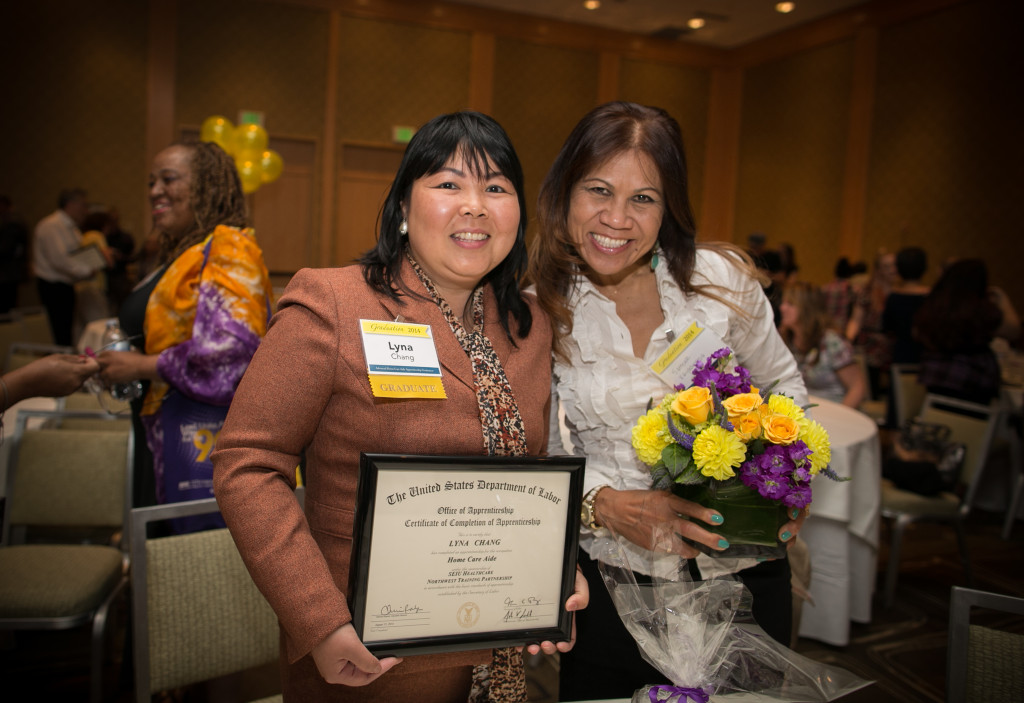Workers Need More Options to Earn, Learn at Same Time
by Charissa Raynor and Johan E. Uvin
The U.S. workforce is in crisis. Today, 36 million adults in our country are considered low-skilled[i]. This means about 1 in 6 American adults lack the ability to spell, read, and write and about 1 in 3 lack the ability to do basic math. These are the basic skills that 21st century employers need as they look to fill millions of current job vacancies. Meanwhile, the majority of working adults with low skills earn meager wages with little to no pathways for career advancement into the middle class. The skills gap also has serious social and economic implications for an individual’s overall quality of life. Adults with low skills are also four times more likely to report poor to fair health than those with higher skills. Needless to say, the economic consequences for our country are significant.
These alarming statistics are a call to action for government, business, labor, industry, and nonprofit leaders. This effort requires bold leadership, shared investment, and a strong commitment to adopting high-impact solutions at all levels of the public and private sector. As the first of a two-part blog discussion, we pose a set of questions to keep in mind as we come together to address the needs of America’s adult education and workforce development systems.
1. How do we re-think “who’s part of the team” in creating opportunities for current and future workers to improve their skills and put them to use in their next level job? We need to rethink and subsequently, transform current “skills building infrastructure” beyond traditional adult basic education classes. Currently, federal and state partnerships invest roughly $2.2 billion in resources to address the skills crisis. This means opportunity for only 2 million of the 36 million who need help. This is why government, business, labor, education, and workforce development communities share a joint responsibility for skills development. None of us can solve the crisis alone; we need everyone on the team. All of these sectors stand to benefit from better skills – as do workers themselves. These collective efforts must focus on shared goals and outcomes by incentivizing action and outcomes in ways that benefit everyone involved.
2. How can technology play a role in raising skills so skills can pay the bills? Expanding access to tens of millions of working adults requires not only leveraging new and existing resources, but also reducing the cost of delivery. Technology is perhaps the top strategy in cost reduction. Here we mean not only costs of delivery, but opportunity costs for working adults themselves. Today, technology exists that allows adults to learn any time, any place, and at their own pace with demonstrable reduction in costs and time to complete, while maintaining or improving learning outcomes. Learning optimized for mobile devices is widely available as are the mobile devices themselves, which are virtually ubiquitous even among low-skilled workers. Technology has the added, but often overlooked benefit, of creating unprecedented transparency into the data of learning, which will accelerate systems improvements needed to rapidly innovate for higher impact. We now need to apply and scale the use of learning technology to open the doors of access to millions more than are served today.
3. How can Registered Apprenticeships pave the way for workers to move from endless low-paying jobs to better-paying, middle-class jobs? Registered Apprenticeships and other formal models where adults “earn and learn” are an under-utilized solution. Most low-skill adults are working and must continue working to put food on the table and pay the bills. Often, that leaves little time for learning. This is where Registered Apprenticeships come in. It is a proven model for building a skilled workforce through on-the-job training and classroom learning. Understanding its value, President Obama wants to double Registered Apprenticeship opportunities in five years. This commitment brings new resources and solutions to our skills crisis, but also raises questions about what an apprenticeship is and how it works for many. Today’s modernized Registered Apprenticeship is not just for the traditional trades. Programs exist in nearly every industry, including health care, IT and advanced manufacturing, and hold enormous promise for expanding access and opportunity for women, people of color, and other underrepresented groups. Modernization also brings competency-based apprenticeships, which measure student progress by demonstration of competencies rather than hours spent inside a classroom. As President Obama recently emphasized, modernized Registered Apprenticeship programs offer real opportunity, which is what all hard working Americans want and deserve.
Today’s workforce crisis is our shared challenge, opportunity, and responsibility. We can’t rely just on government or employers or labor or “you.” We need everyone “in” to get the job done. New technologies, a revamped adult education system, and 21st century modernized Registered Apprenticeships will help get us there. We have the tools and the resources to define our future instead of being defined by our past. What we need now is leadership, commitment, and investment to move high impact solutions rapidly. Are you “in?”
About the Authors:
Charissa Raynor is the Executive Director of the SEIU Healthcare NW Training Partnership/SEIU Healthcare NW Health Benefits Trust in Seattle
Johan E. Uvin is the Acting Assistant Secretary for the Office of Career, Technical, and Adult Education at the U.S. Department of Education



